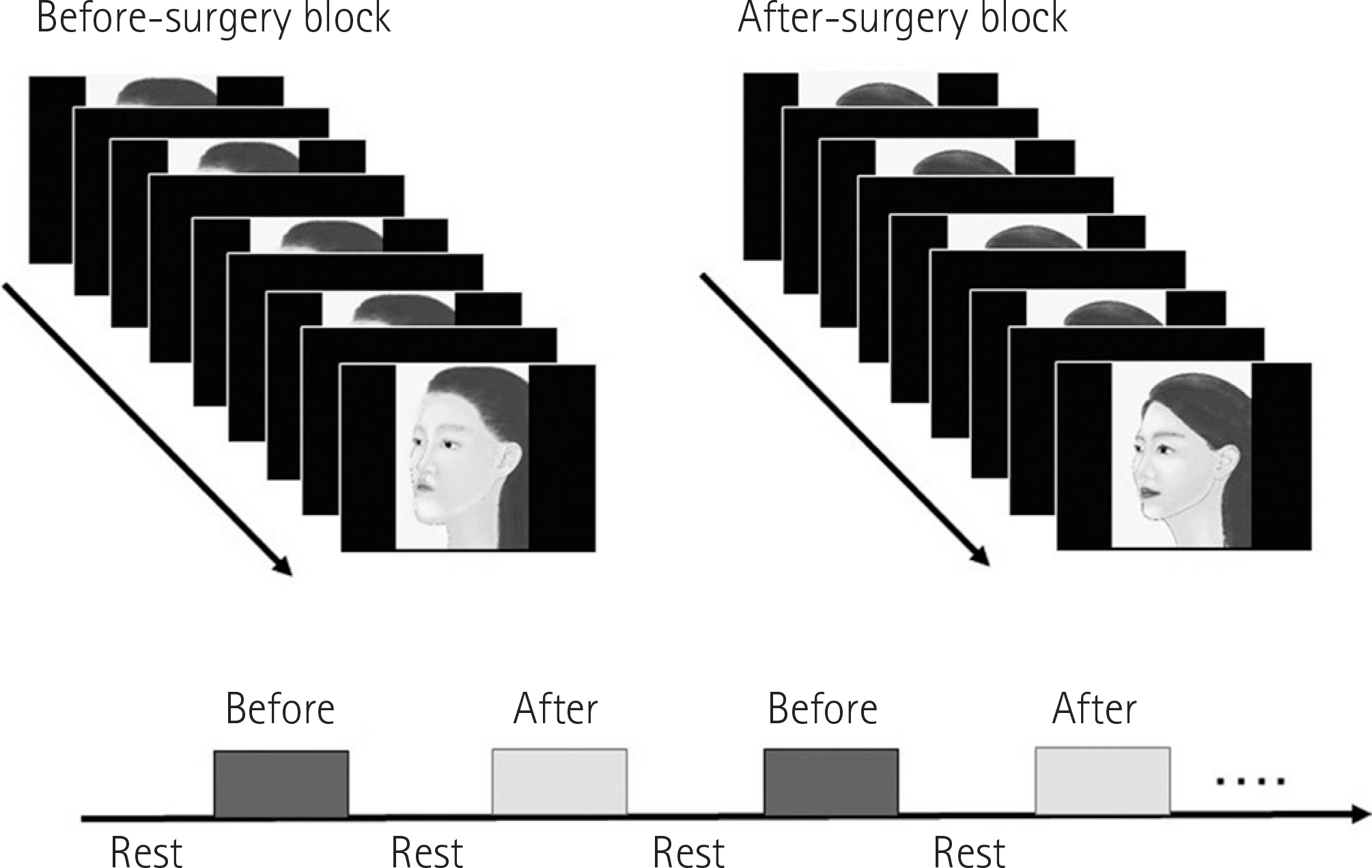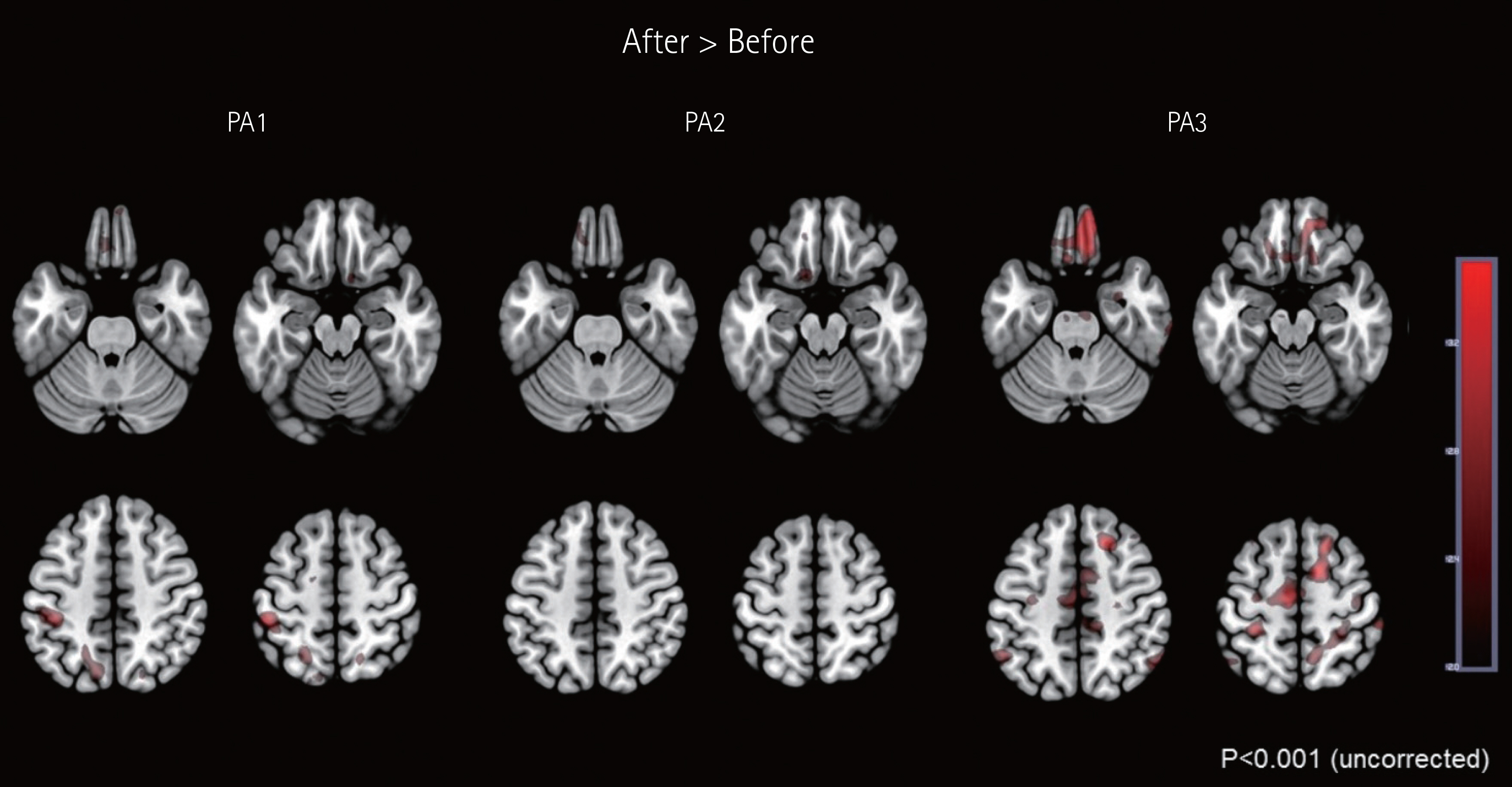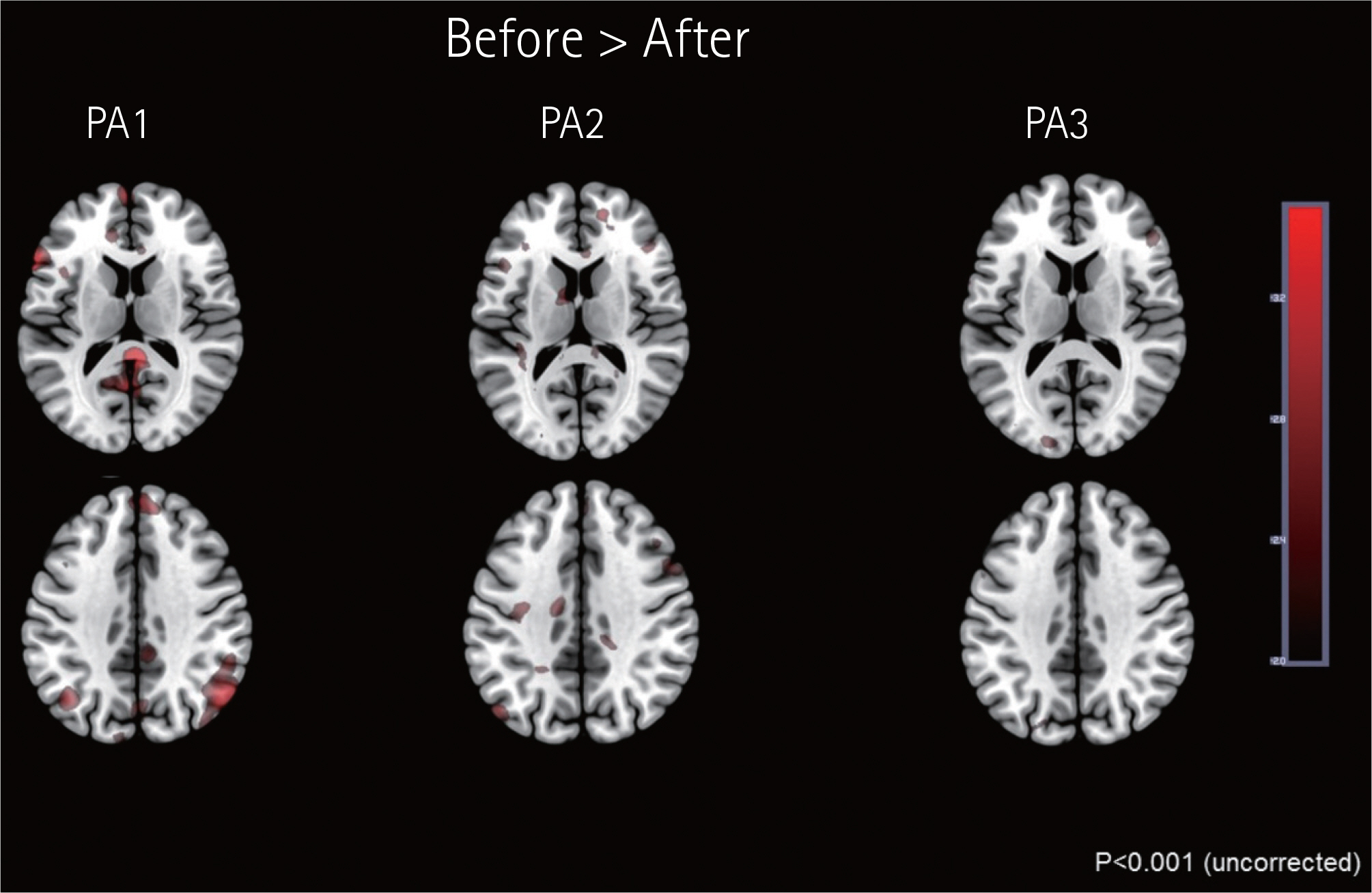J Korean Soc Radiol.
2018 Jun;78(6):412-416. 10.3348/jksr.2018.78.6.412.
Functional Magnetic Resonance Imaging to Evaluate Patient Satisfaction Following Bimaxillary Surgery: A Preliminary Study
- Affiliations
-
- 1Department of Dentistry, Konkuk University Medical Center, Seoul, Korea.
- 2Department of Radiology, Konkuk University Medical Center, Konkuk University School of Medicine, Seoul, Korea. mdmoonwj@kuh.ac.kr
- 3GE Healthcare, Seoul, Korea.
- KMID: 2412360
- DOI: http://doi.org/10.3348/jksr.2018.78.6.412
Abstract
- Although bimaxillary surgery enhances patients' self-esteem and mood by improving their facial appearance, surgical outcome assessments for this procedure are limited. This preliminary study investigated differences in brain activity on functional magnetic resonance imaging (fMRI) during self-face evaluation before and after bimaxillary surgery. Three patients (1 man and 2 women, age range: 20-27 years) underwent fMRI while viewing self-face images before and after bimaxillary surgery for maxillofacial deformity. The activation in the left postcentral gyrus, and medial orbital frontal cortex was significantly great in response to after-surgery self-face images compared to before-surgery images. Our preliminary results may facilitate the development of an objective measure for patient satisfaction after orthognathic surgery including bimaxillary surgery.
MeSH Terms
Figure
Reference
-
References
1. Hwang K, Choi YB. Postoperative monitoring following jaw surgery is essential. Arch Plast Surg. 2013; 40:66–67.
Article2. Khechoyan DY. Orthognathic surgery: general considerations. Semin Plast Surg. 2013; 27:133–136.
Article3. Murphy C, Kearns G, Sleeman D, Cronin M, Allen PF. The clinical relevance of orthognathic surgery on quality of life. Int J Oral Maxillofac Surg. 2011; 40:926–930.
Article4. Ueno A, Ito A, Kawasaki I, Kawachi Y, Yoshida K, Murakami Y, et al. Neural activity associated with enhanced facial attractiveness by cosmetics use. Neurosci Lett. 2014; 566:142–146.
Article5. O'Doherty J, Winston J, Critchley H, Perrett D, Burt DM, Dolan RJ. Beauty in a smile: the role of medial orbitofrontal cortex in facial attractiveness. Neuropsychologia. 2003; 41:147–155.6. Aharon I, Etcoff N, Ariely D, Chabris CF, O'Connor E, Breiter HC. Beautiful faces have variable reward value: fMRI and behavioral evidence. Neuron. 2001; 32:537–551.7. Stalnaker TA, Cooch NK, Schoenbaum G. What the orbitofrontal cortex does not do. Nat Neurosci. 2015; 18:620–627.
Article8. Platek SM, Loughead JW, Gur RC, Busch S, Ruparel K, Phend N, et al. Neural substrates for functionally discriminating self-face from personally familiar faces. Hum Brain Mapp. 2006; 27:91–98.
Article9. Shen H, Chau DK, Su J, Zeng LL, Jiang W, He J, et al. Brain responses to facial attractiveness induced by facial proportions: evidence from an fMRI study. Sci Rep. 2016; 6:35905.
Article10. Martín-Loeches M, Hernández-Tamames JA, Martín A, Urrutia M. Beauty and ugliness in the bodies and faces of others: an fMRI study of person esthetic judgement. Neuroscience. 2014; 277:486–497.
Article
- Full Text Links
- Actions
-
Cited
- CITED
-
- Close
- Share
- Similar articles
-
- Functional Magnetic Resonance Imaging of the Brain: Principle and Practical Application
- Functional Analysis of the Heart by Magnetic Resonance Imaging
- Patients' Satisfaction after Reverse Total Shoulder Arthroplasty Is Affected by Preoperative Functional Status
- Advanced Magnetic Resonance Imaging for Pediatric Brain Tumors: Current Imaging Techniques and Interpretation Algorithms
- Magnetic Resonance Imaging Meets Fiber Optics: a Brief Investigation of Multimodal Studies on Fiber OpticsBased Diagnostic / Therapeutic Techniques and Magnetic Resonance Imaging




